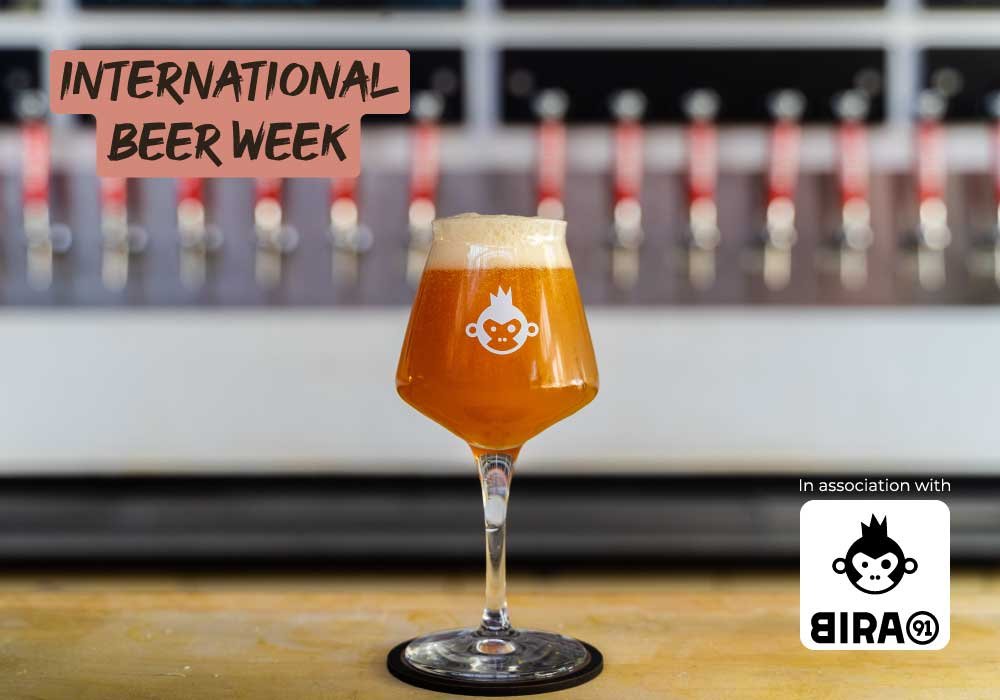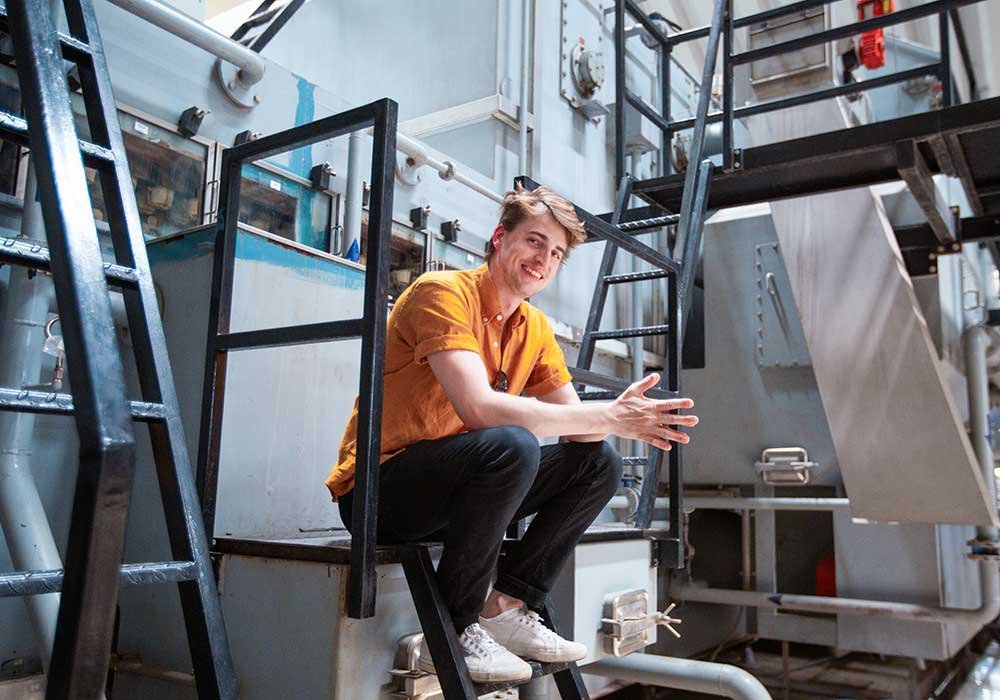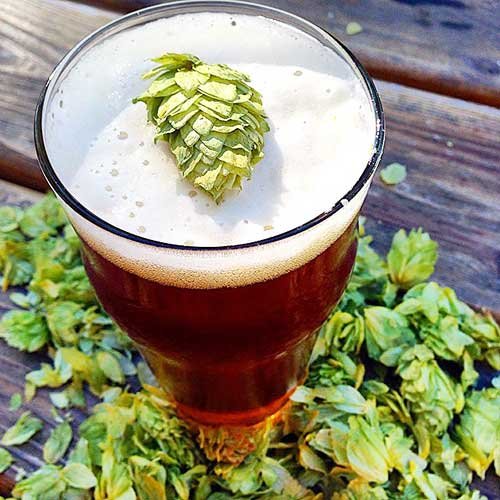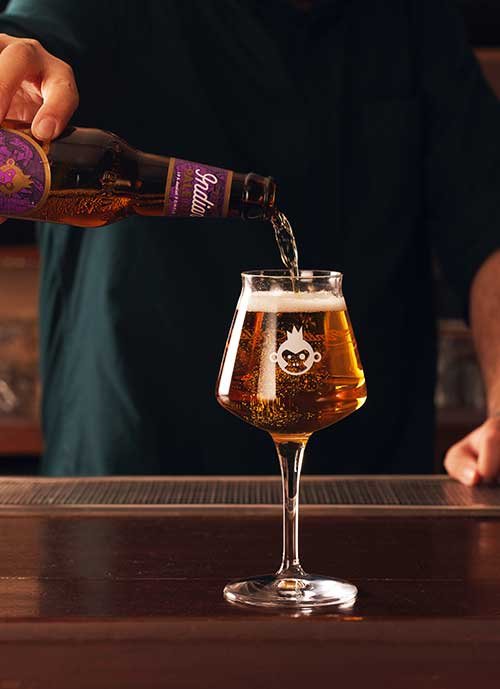Bira 91’s VP – Innovations & Brewing, Thomas Hartman, Talks India Pale Ales and All Things Hoppy

Oh, IPAs! You either love that bitter, hop hit – or it turns you off completely.
 Love them or hate them – one can’t deny that while the IPA has become …respectfully mainstream to a certain extent, there’s been an incredible evolution and experimentation in the world of hops over the last few decades. The result today is a wonderfully versatile beer: piney, citrusy, earthy, floral, fruity, peppery—you name it, there’s an IPA flavour out there for just about anyone!
Love them or hate them – one can’t deny that while the IPA has become …respectfully mainstream to a certain extent, there’s been an incredible evolution and experimentation in the world of hops over the last few decades. The result today is a wonderfully versatile beer: piney, citrusy, earthy, floral, fruity, peppery—you name it, there’s an IPA flavour out there for just about anyone!
As an ode to this style, Brewer World decided to chat up with Bira 91 – India’s very own local beer brand that has become a huge favourite in a short span of time – to talk to us about this hop-fuelled heaven.

From a little walk down memory lane to fun trivia about the brand’s IPA variants: the West Coast IPA and the Indian Pale Ale, to tips on food pairing – Thomas Hartman, VP – Innovations & Brewing at Bira 91, steps forward today on day 2 of our International Beer Week campaign to tell us why there are so many reasons to love the IPA.
It is said that the India pale ale left Indian shores with the British. Now, thanks to brands like Bira 91, it’s making a comeback. Please comment.
 That’s right! Enterprising brewers started sending beer on East India Company ships in the late 1700s to provision the British troops stationed here. At the time there was no brewing in India due to the heat. The story goes that these brewers packed extra hops into the beer and brewed it to a higher ABV – as both hops and alcohol act as preservatives – and this allowed the beer to survive the long voyage.
That’s right! Enterprising brewers started sending beer on East India Company ships in the late 1700s to provision the British troops stationed here. At the time there was no brewing in India due to the heat. The story goes that these brewers packed extra hops into the beer and brewed it to a higher ABV – as both hops and alcohol act as preservatives – and this allowed the beer to survive the long voyage.
Brewers love to make IPA. It’s fun because there is a lot of room in the style to put your personal spin to it – but the beer is also about going a little extra, a little over the top, so we get to do things we wouldn’t do otherwise if trying to brew a balanced and easy drinking lager.
As the consumers here get exposed more and more to specialty beer they’re willing to try new styles, and to push their experience a bit further. It is a sort of push and pull from both brewers and consumers that happens naturally anywhere specialty beer starts being made and challenges the status quo.
I really think IPA will continue to grow here as people start to expose themselves to more flavourful beers, and soon every brewer will be making IPA.
What can you tell us about the Indian palate preferences with regards to the IPA style as compared to other countries?

IPA is traditionally a lot more bitter, although that is starting to change now too. Originally, English IPA, and then later the American West Coast IPA, was very bitter and was considered a beer for the initiated connoisseur. As the style has gained popularity and as more brewers have started to experiment, the idea of what an IPA is, has changed. There are now all sorts of regional IPAs, such as the West Coast, East Coast, New England, lower strength, or “session” IPAs, double and triple IPAs, milkshake IPA, sour IPA, fruited IPA… I could go on!
There is a perception, especially in the larger consumer packaged goods business, that the Indian palate is very sweet, and that bitterness should be avoided. My personal thoughts on it are that people are unique, and you can’t really assign an overarching preference to a country, especially not in a place like India that has so many people and regional cuisines and food cultures.
People’s palates also evolve as they age, and typically at first there is an aversion to bitterness, but as you get exposed to it you start to like it. It’s sort of like drinking coffee. At first you might want to put sugar and cream in it, but eventually, you start to like it black. I think it’s the same with bitter beer. If you try a more bitter beer it might shock your palate at first, but then your upper limit for bitterness starts to stretch, and you start to like beer with a bit more of it.
If you look at a place like the US, where IPA is and has been the rage in craft beer for over two decades, you can see this effect. Americans are also considered as having a sweet tooth, and yet IPA is the most popular craft beer – and still growing.
Tell us about the Indian Pale Ale brewed with Pomelo and the West Coast IPA. What do you personally love about these two beers?
 The India Pale Ale brewed with Pomelo, or as we affectionately call it in the breweries, “Pipa”, was brewed to put an Indian twist on IPA. Bira 91 beers are always about bringing a fresh and flavourful new experience to the beer drinking public – but we always strive to do it in a balanced way. We want to brew beers that people can sit around and drink a few of, instead of blasting them with intensity to the point where they only want a few sips. We took this approach with the Indian Pale Ale brewed with Pomelo, and decided to make a session IPA, where the ABV and IBU is dropped down a bit to allow the drinker to enjoy several beers over a drinking session, but also keep that balance of interesting hop aroma.
The India Pale Ale brewed with Pomelo, or as we affectionately call it in the breweries, “Pipa”, was brewed to put an Indian twist on IPA. Bira 91 beers are always about bringing a fresh and flavourful new experience to the beer drinking public – but we always strive to do it in a balanced way. We want to brew beers that people can sit around and drink a few of, instead of blasting them with intensity to the point where they only want a few sips. We took this approach with the Indian Pale Ale brewed with Pomelo, and decided to make a session IPA, where the ABV and IBU is dropped down a bit to allow the drinker to enjoy several beers over a drinking session, but also keep that balance of interesting hop aroma.
We also wanted to add a unique Indian ingredient. Turns out the pomelo, or chakotara, is native to South India. Even more interesting, it was actually taken by an East India ship captain to Barbados and crossed with the Mandarin orange, and became the grapefruit, so there is a great connection to the heritage of the IPA there as well. I really enjoy the bright, citrusy flavour the pomelo brings. It is a perfect pairing to the hops we have added, which bring a citrus and tropical fruit aroma to the beer. But for me the best part about this IPA is actually the subtle malty character it has. Though this is a lower ABV beer, we made sure it doesn’t have a watery body. Instead, we used several special malts which add a depth of toffee, nuttiness, and toastiness to the beer which I think really add a complexity that makes it a joy to drink.
 For the West Coast IPA, we wanted to show a bit more of our wild side. This beer is brewed in the tradition of West Coast brewers of the US – which means a very dry and crisp pale beer, with a strong but clean and refreshing bitterness, and a lot of that typical American hop aroma of citrus and pine. It’s a lot more over the top compared to Pipa, but still representative of our house style; the beer strikes a fine balance of higher ABV, big hop aroma, and clean bitterness.
For the West Coast IPA, we wanted to show a bit more of our wild side. This beer is brewed in the tradition of West Coast brewers of the US – which means a very dry and crisp pale beer, with a strong but clean and refreshing bitterness, and a lot of that typical American hop aroma of citrus and pine. It’s a lot more over the top compared to Pipa, but still representative of our house style; the beer strikes a fine balance of higher ABV, big hop aroma, and clean bitterness.
I particularly like that this beer is super drinkable, even though it packs a lot of intensity. The dryness and higher bitterness make it very refreshing, even though it’s got a higher ABV. This is a dangerous one… it’s hard to tell that you’re drinking a stronger beer.
How is the Indian Pale Ale brewed with Pomelo different from the West Coast IPA. if you had to explain it to someone who is new to the world of craft beers?
The Pale Ale brewed with Pomelo and West Coast IPA both strike a similar balance; a bit higher on the bitterness scale, hop forward, with a balancing malt character. The difference is where they land on the spectrum of intensity.
Pipa is lower in ABV and bitterness and a bit more delicate and subtle – though still with a lot of flavour.
The West Coast IPA is much bigger. A lot of hop aroma and bitterness. You’ll definitely know you’re drinking an intense beer from the get-go.
What are your suggestions for food pairing when it comes to the PIPA and the West Coast IPA?
 The number one rule for pairing food and beer is to note intensity. If you pair an intense beer with a delicate dish, or vice versa, it just won’t work well. One will overwhelm the other. So to start, the West Coast IPA will need more intense dishes, while Pipa is super flexible and can serve as a partner to many different types of cuisine.
The number one rule for pairing food and beer is to note intensity. If you pair an intense beer with a delicate dish, or vice versa, it just won’t work well. One will overwhelm the other. So to start, the West Coast IPA will need more intense dishes, while Pipa is super flexible and can serve as a partner to many different types of cuisine.
This might come as a surprise, but India pale ale is a great companion to… wit for it… Indian food! Thai, Vietnamese, and other Southeast Asian cuisine as well. The higher bitterness of the West Coast IPA will help cut fat and keep your palate fresh, and the citrus and spice notes in the hops go really well with the spices in curries, or Southeast Asian cuisine.
Any dish that has a citrus element is also a winner, as the citrus character from the hops is a great pairing. I love Pipa with fish tacos with a healthy squeeze of lime.
To make it easy – for West Coast IPA turn to fat, for Pipa turn to acid – and refine from there.
What is your advice to someone trying IPAs for the first time?
Be open, and understand that the higher bitterness can be a shock to the palate. That bitterness can be a surprise, but take some time, explore the beer a bit, and you’ll start to pick up all the complexity that people love about the beer.



